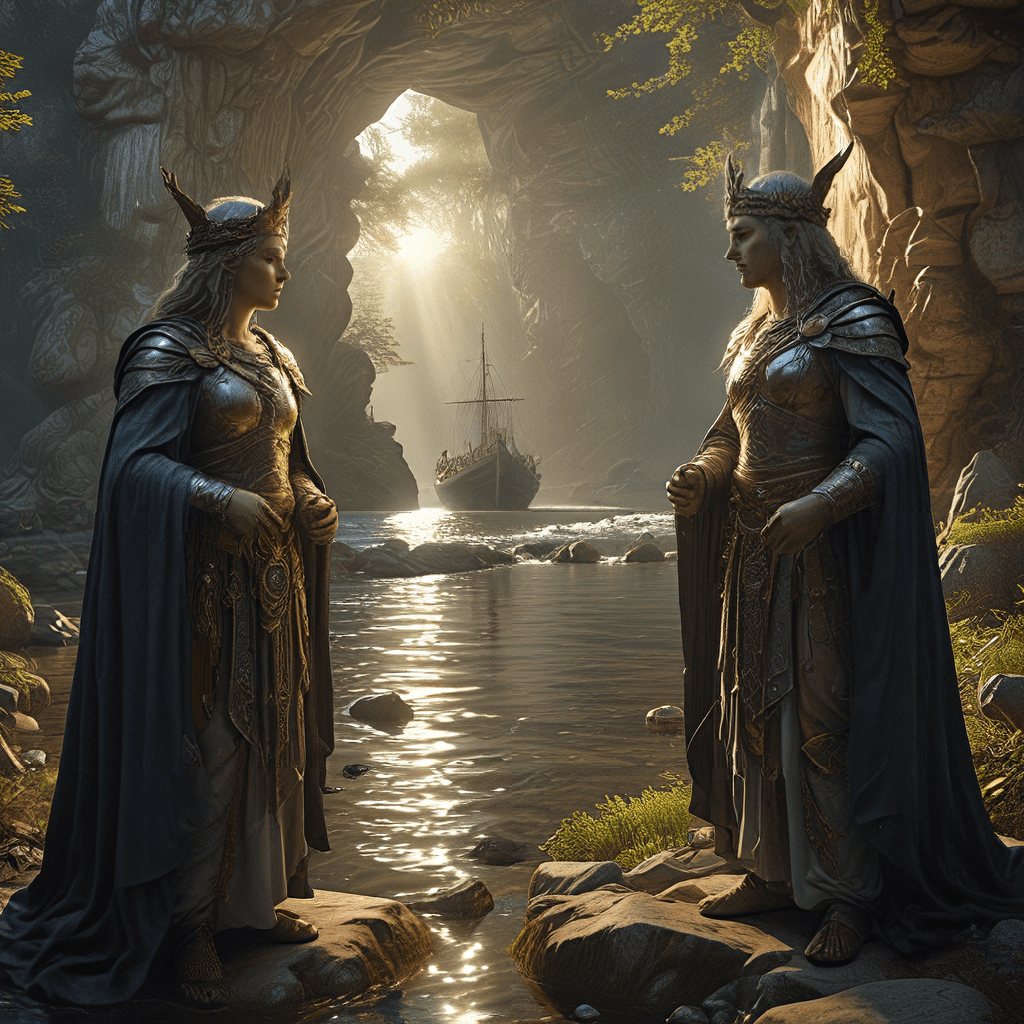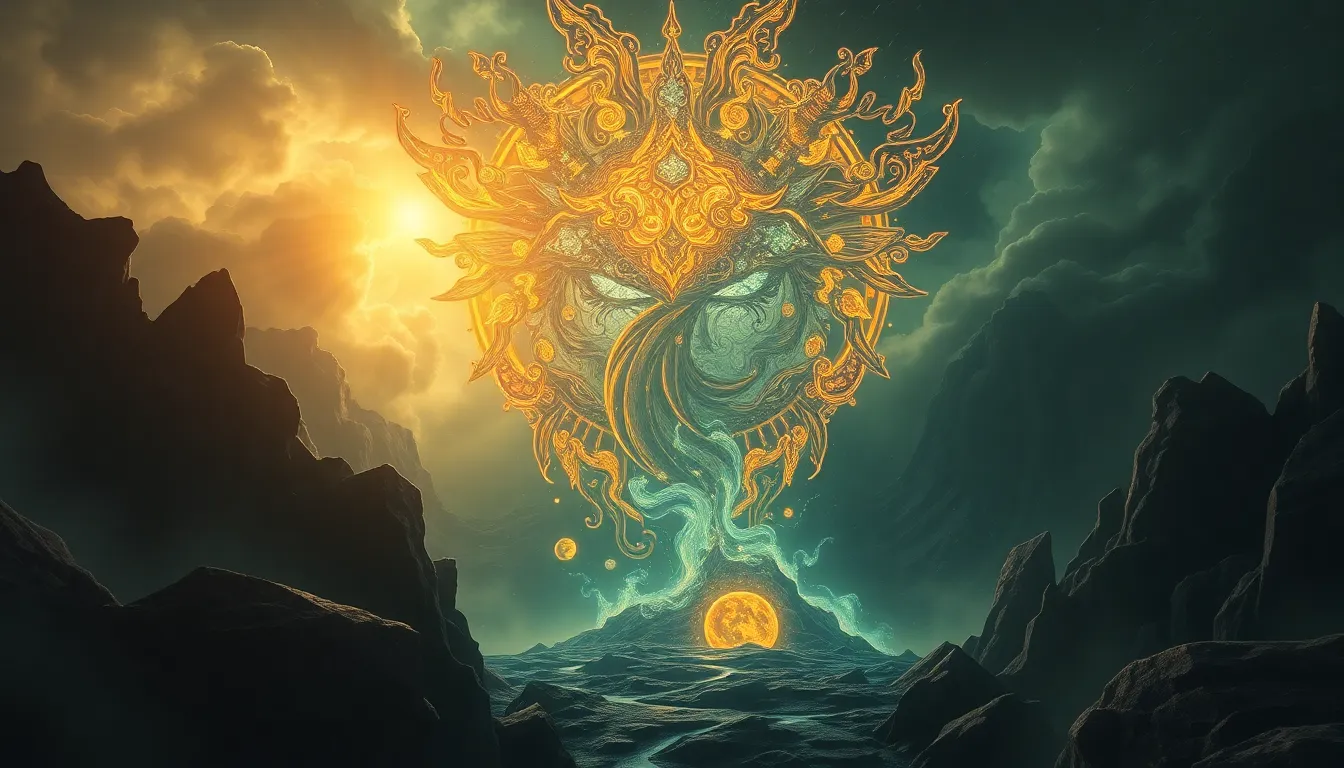Baltic Mythology’s Wisdom Keepers and Oracles: An Exploration
The Baltic region, encompassing parts of modern-day Latvia, Lithuania, and Estonia, is steeped in a rich tapestry of ancient myths and legends, revealing fascinating insights into the worldview of its people. Within this vibrant mythology, wisdom and knowledge were held in high esteem, with various figures and practices serving as conduits to the divine and the mysteries of the universe. From the deities to the supernatural beings, the Baltic mythology embraced a diverse array of wisdom keepers and oracles, whose roles were crucial in guiding the lives of individuals and the fate of communities.
The Divine Source of Knowledge: The Role of Dievs and Laima
At the heart of Baltic mythology lies Dievs, the supreme god, representing the sky, order, and justice. Dievs was believed to be the ultimate source of knowledge and wisdom, dispensing guidance and protection to humankind. Alongside Dievs stood Laima, the goddess of fate and destiny, who played a pivotal role in shaping the lives of individuals. Laima was believed to spin the threads of life at birth, determining a person's destiny and future. Both Dievs and Laima were revered as powerful sources of wisdom, inspiring reverence and respect among the Baltic people.
The Guardians of Wisdom: A Look at the Welves and Other Supernatural Beings
The Baltic mythology is populated by a multitude of supernatural beings, each possessing unique abilities and characteristics. Among these, the Welves, or Velnias, held a prominent position as guardians of knowledge and wisdom. These mythical creatures, often depicted as mischievous and shape-shifting, were believed to possess arcane knowledge and could influence the lives of humans through their actions. Other supernatural beings, such as the Jūras, water spirits, and the Meža, forest spirits, were also believed to hold secrets and wisdom, offering guidance and protection to those who sought their favor.
The Power of Prophecy: The Foretelling of Fate and Destiny
The Baltic people held a deep belief in the power of prophecy, perceiving it as a way to gain insights into the future and navigate the uncertainties of life. The ability to foretell the future was attributed to various beings, including the Welves, certain human seers, and even the deities themselves. These prophecies were believed to offer guidance on important decisions, predict events, and reveal the fate of individuals or communities.
Oracles and Seers: The Interpreters of the Divine
Within the Baltic mythology, oracles and seers served as intermediaries between the human world and the divine realm. They were believed to possess the ability to interpret signs, omens, and dreams, revealing the will of the gods and offering guidance to those seeking answers. Oracles often utilized various techniques, such as divination, reading runes, or interpreting the flight of birds, to gain insights into the unseen. Seers, on the other hand, were often gifted with visions or dreams that revealed future events or provided insights into the past.
Rituals and Offerings: Seeking Guidance from the Spirits
The Baltic people practiced various rituals and offerings to appease the spirits and seek their guidance. These rituals could range from simple prayers and sacrifices to elaborate ceremonies involving feasting, music, and dance. Offerings, typically consisting of food, drink, or other valuable items, were presented to appease the spirits and ensure their favor. These practices were considered crucial for maintaining a connection with the divine and seeking wisdom and protection from the supernatural forces.
The Significance of Dreams and Visions
In Baltic mythology, dreams and visions held immense significance, serving as windows into the spiritual realm and providing insights into the past, present, and future. These ethereal experiences were not merely fleeting images of the night but were considered powerful messages from the gods, spirits, or ancestors.
Dreams, particularly those vivid and impactful, were interpreted as divine communications. A recurring dream might signify a warning, a guidance, or a message from a specific supernatural being. The interpretation of dreams often involved seeking the advice of seers or oracles, who possessed the knowledge to decipher the hidden meanings within those nocturnal journeys.
Visions, on the other hand, were often associated with prophetic experiences. These powerful and often overwhelming encounters could involve seeing a specific event unfold, receiving a message from a deity, or gaining insight into the future. Such visions were often regarded as a direct manifestation of the divine will, holding immense weight in shaping individual and communal destinies.
The Power of the Spoken Word: The Influence of Runes and Incantations
In Baltic mythology, words held immense power. They were not mere sounds but possessed the ability to shape reality and influence the spiritual world. This belief manifested in the use of runes and incantations, powerful tools used for divination, protection, and communication with the supernatural realm.
Runes, ancient symbols carved onto wood or stone, represented specific concepts, deities, or powers. When assembled into sequences, they formed spells or messages capable of influencing fate, seeking guidance, or even banishing evil spirits. The art of reading runes, known as runology, was considered a sacred knowledge passed down through generations, allowing skilled practitioners to interpret the divine messages embedded within these symbols.
Incantations, on the other hand, were spoken words or phrases believed to possess magical properties. These powerful pronouncements could be used to summon spirits, invoke protection, or influence events. The effectiveness of incantations rested on their specific wording, the intention of the speaker, and the accompanying rituals or offerings. The spoken word, wielded with knowledge and precision, could bridge the gap between the human and the divine, shaping the course of events and influencing the fate of individuals and communities.
The Transmission of Knowledge: The Preservation of Oral Traditions
In a pre-literate society, knowledge was primarily passed down through oral traditions. Stories, songs, myths, and legends were meticulously preserved and transmitted from generation to generation, serving as a vital repository of cultural wisdom. This oral transmission involved dedicated storytellers, known as “pasāku stāstītāji” (storytellers) in Latvian, who played a crucial role in preserving and sharing the vast knowledge of their ancestors.
These storytellers, often revered for their wisdom and eloquence, held a central position within their communities. They gathered around firepits, markets, or during festivals, captivating audiences with their tales that encapsulated historical events, moral lessons, and the lessons of the gods. This oral tradition was a powerful force, shaping the identity, values, and worldview of the Baltic people. It ensured that the wisdom of the past, encoded within myths and legends, would continue to influence the present and future generations.
The Enduring Legacy: Baltic Mythology’s Impact on Today’s World
While Baltic mythology has long been intertwined with Christianity, its influence remains visible within contemporary culture, art, and literature. The enduring power of these ancient stories lies in their capacity to resonate with universal themes of human nature, spirituality, and the search for meaning.
The reverence for wisdom, the belief in the interconnectedness of humans and the spiritual world, and the importance of oral traditions continue to inform modern-day artistic expression, folklore, and cultural identity. From the poetic language of modern Baltic literature to the use of traditional folk music, the echoes of Baltic mythology reverberate today, reminding us of the rich heritage and timeless wisdom that continues to shape our understanding of life, death, and the mysteries of the universe.
FAQ
Q: What is the most significant aspect of Baltic mythology?
A: The most significant aspect of Baltic mythology is its emphasis on the interconnectedness of humans and the spiritual world. People believed that deities, spirits, and ancestors played a crucial role in their lives, and they sought guidance and wisdom from these supernatural forces through various rituals and practices.
Q: What is the difference between a seer and an oracle?
A: While both seers and oracles possessed the ability to predict the future, they differed in their methods and sources of knowledge. Seers often received visions or dreams that revealed future events, while oracles relied on more direct methods like divination, reading runes, or interpreting the flight of birds.
Q: What role did dreams play in Baltic mythology?
A: Dreams were considered powerful messages or communications from the divine, spirits, or ancestors. They were believed to offer guidance, warn of dangers, or reveal the hidden meanings behind events.
Q: What is the significance of runes in Baltic mythology?
A: Runes were ancient symbols that represented specific concepts, deities, or powers. They were used for divination, protection, and communication with the spiritual realm, forming spells or messages capable of influencing fate or seeking guidance.
Q: How did Baltic mythology influence modern culture?
A: The themes of interconnectedness with the spiritual world, reverence for wisdom, and the importance of oral traditions continue to resonate in contemporary Baltic culture, art, and literature. These themes inform artistic expressions, folklore, and cultural identity.



